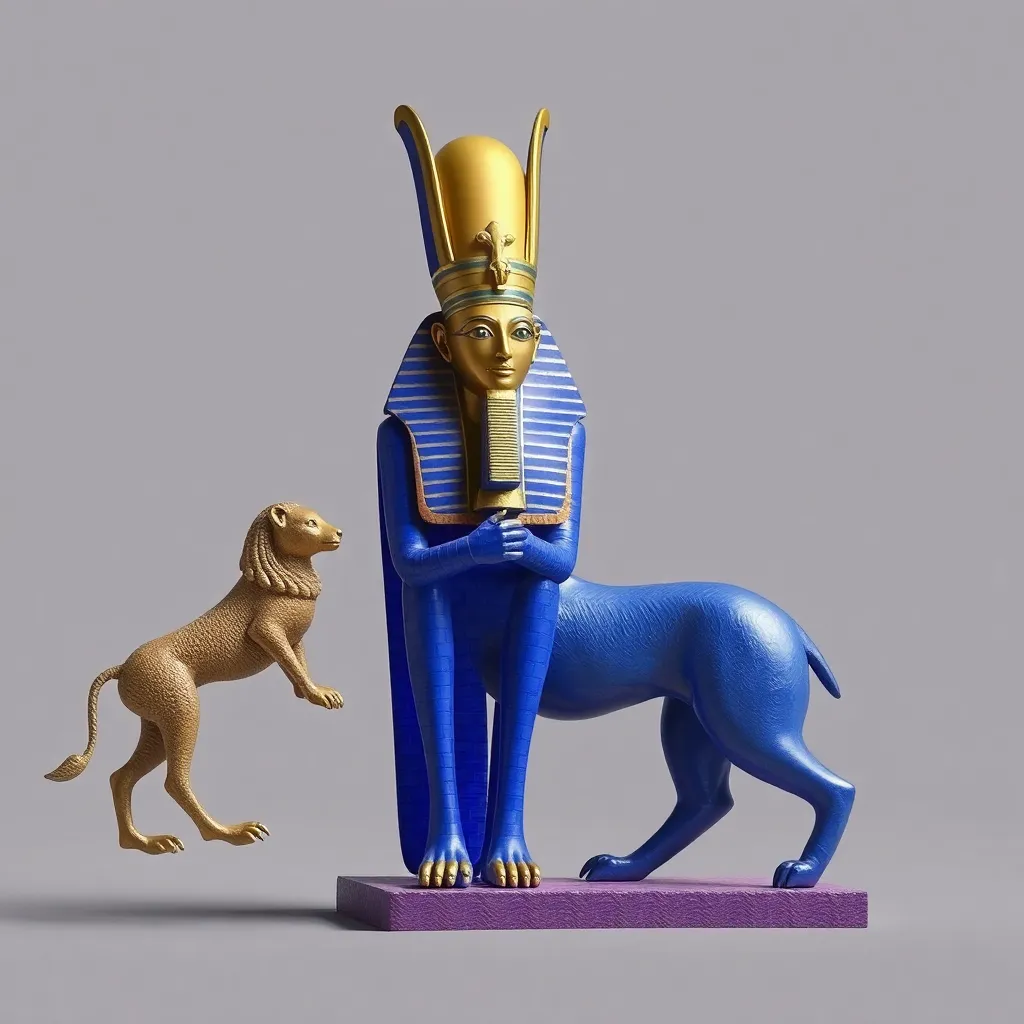The Aten and the Role of Sacred Animals in Worship
I. Introduction
The ancient Egyptian religion is rich with a plethora of deities, each with unique attributes and significance. Among these, the Aten stands out as a prominent figure, particularly during the reign of Pharaoh Akhenaten. The Aten is often represented as a sun disk, symbolizing the life-giving force of the sun. This article aims to explore the Aten as a deity in ancient Egyptian religion, the sacred animals associated with its worship, and their broader implications within the framework of Atenism.
II. Historical Context of the Aten
The Aten’s emergence can be traced back to the polytheistic traditions of ancient Egypt, where numerous gods were worshiped. However, its prominence surged during the reign of Akhenaten (circa 1353-1336 BCE), who introduced a radical shift in religious practices by establishing Atenism as the central belief system.
This transition marked a departure from the traditional pantheon of gods, as Akhenaten promoted the Aten as the sole deity, diminishing the roles of other gods. This theological shift not only transformed religious practices but also had significant cultural and political repercussions throughout Egypt.
III. Symbolism of the Aten
The Aten is primarily depicted as a sun disk radiating rays, each ending in hands offering life. This imagery emphasizes its role as a life-giving force and a source of creation. The representation of the Aten in art often conveys themes of illumination and sustenance, embodying the essence of divine protection and nourishment.
In comparison to other deities in the Egyptian pantheon, the Aten’s representation as a singular, unifying source of light and life contrasts sharply with the more anthropomorphic and localized gods, such as Ra or Osiris. This unique symbolism contributed to the Aten’s distinctive place within the religious landscape of ancient Egypt.
IV. Sacred Animals in Ancient Egyptian Worship
Animals held significant importance in ancient Egyptian religion, often embodying various deities or serving as intermediaries between the divine and human realms. Each sacred animal was attributed symbolic meanings that reflected the characteristics of the gods they represented. Some key points include:
- Cats: Symbolizing protection and fertility, associated with the goddess Bastet.
- Crocodiles: Representing strength and power, linked to the god Sobek.
- Bulls: Emblematic of virility and strength, associated with the god Apis.
This veneration of animals highlighted a deep connection between the natural world and the divine, reinforcing the idea that the divine manifests in various forms throughout nature.
V. The Role of Sacred Animals in Aten Worship
In the context of Aten worship, specific animals were associated with the deity, reinforcing its life-giving attributes. The following animals were particularly significant:
- Scarabs: Symbolizing rebirth and regeneration, often connected to the sun’s cycle.
- Birds: Especially the falcon, representing the sky and often associated with the god Horus, symbolizing protection.
Rituals involving these sacred animals included offerings and ceremonies that acknowledged their divine connection. Temples dedicated to the Aten often integrated animal symbolism into their architecture and art, demonstrating the relationship between the Aten, the animals, and the natural world. The utilization of animal motifs in temple reliefs and sculptures served as a reminder of the Aten’s omnipresence and its role in sustaining life.
VI. Theological Implications of Atenism and Animal Worship
Atenism presented a unique perspective on the relationship between the deity and the natural world. The Aten was seen as a unifying force, encompassing all aspects of life, thus fostering a sense of interconnectedness among all living beings. This theological outlook raised several ethical considerations regarding the treatment of sacred animals, emphasizing respect and reverence for the natural world.
Additionally, the emphasis on the Aten’s singularity and the interconnectedness of life had a lasting impact on later religious thought, influencing subsequent beliefs about the divine and the role of nature in spiritual practices.
VII. Decline of Aten Worship and Sacred Animal Practices
Despite its initial prominence, Atenism faced significant challenges following the death of Akhenaten. Various factors contributed to the decline of Aten worship:
- The restoration of traditional polytheistic practices under subsequent rulers.
- The backlash against Akhenaten’s radical reforms and the return to established religious norms.
- The eventual erasure of Akhenaten’s legacy, including the worship of the Aten.
As traditional beliefs resurfaced, the significance of sacred animals also shifted. While some continued to be revered, others lost their prominence in the evolving religious landscape of post-Aten Egypt.
VIII. Conclusion
In summary, the Aten and the sacred animals associated with its worship played a significant role in ancient Egyptian religion. The Aten’s unique attributes as a life-giving force and the reverence for sacred animals illustrate the deep connections between the divine and the natural world. The legacy of Atenism continues to influence modern understandings of ancient religions, highlighting the importance of worship as a means of connecting humanity with the divine.
Ultimately, the interplay between the Aten and sacred animals reflects a rich tapestry of beliefs that speaks to the broader human experience of seeking meaning and connection in the face of the divine.




